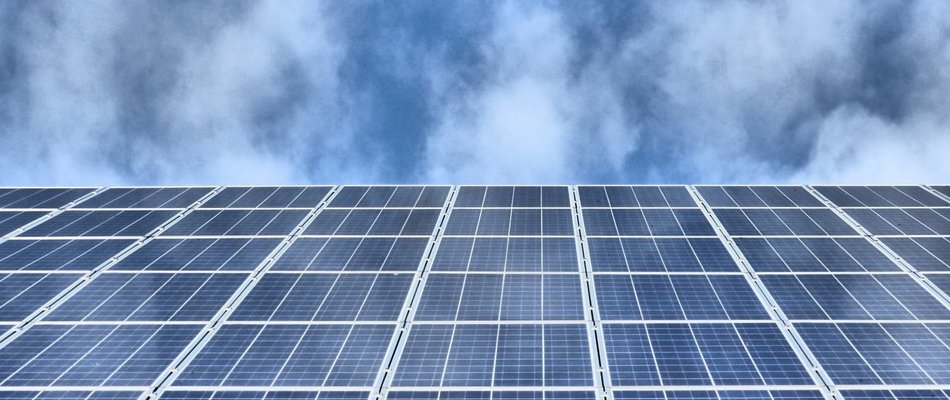EU funded SUPER PV project aims to reduce LCOE of PV by 26%-37%.
By WIP
The IPCC, the United Nations body for assessing the science related to climate change, released in 2018 a Special Report (1) on the dramatic impacts of a possible global warming over 1.5°C (above preindustrial levels). According to this report, limiting warming to 1.5°C to mitigate its negative consequences would imply reaching net zero CO2 emissions globally around 2050 and, for this purpose, decarbonization of electricity will have to play without doubt a central role.
At world level, the IEA´s Sustainable Development Scenario of 2018 expects renewables to become the dominant force in power generation, providing over 65% of global electricity generated by 2040. More optimistic, a new study (2) by the Energy Watch Group and Lappeenranta-Lahti University of Technology (LUT) sees as feasible and economically viable a global energy system completely based on renewables and points out shares around 69% in 2050 just for solar energy. In fact, solar PV is already the lowest cost source of electricity in many countries and very likely it will dominate renewable capacity growth in the upcoming years with annual increases over 100 GW (3).
Apart from its continuously decreasing price, Solar PV gathers some other characteristics that make it a proven technology capable of making a substantial contribution to achieve a sustainable global energy system. According to The European Technology and Innovation Platform for Photovoltaics (EIPT PV), it can be, for instance, used in all geographic regions, installed rapidly and scaled up modularly, and it supports a socially acceptable energy transition by offering employment, distributed generation and integrated application as well as new business opportunities(4).
On the other hand, its variability of supply can be addressed through different strategies. A wide panoply of storage and conversion technologies (pumped storage, batteries, power-to-gas, power-to-heat, heat storage, etc.) are being deployed and further investigated to this end. In addition, innovative approaches such as Virtual Power Plants based on digitalization and forecasting techniques are opening new possibilities to improve flexibility through the combination of diverse variable output and dispatchable renewable sources. Expanding transmission grids for power exchange over larger areas (combining greater variety of weather conditions and energy sources) or undertaking demand management actions are both additional alternative paths to increase the flexibility of the energy systems allowing high shares of renewables.
In this way, the undeniable key role that photovoltaics will play in the European future energy mix can entail another collateral benefit that shouldn’t be overlooked. Solar PV can provide a secure supply of energy and so energy independence to the EU, becoming in this sense a sector of strategic importance. However, to this end, the EU has to restore the competitive manufacturing of key components of PV systems and regain leadership on world market.
Aware of this challenge, some European countries have clearly showed in the last months their commitments for boosting this source of energy. Just to mention a few examples, the new regulatory framework for PV on self-consumption that came into force in April in Spain is expected to notably increase its installed PV capacity to reach the new RE target of the country (74% for 2030). On the other hand, Emmanuel Macron’s administration engaged at the beginning of June this year to legislate for French and European rules to unlock large-scale investments in PV manufacturing as one of the industries that France wants to promote in order to re-stablish their competitiveness (5).
At European level, several initiatives are also underway for leading the clean energy transition. In particular, around €5.9 billion are allocated to energy projects in the EU's Research and Innovation Programme Horizon 2020 that is running since 2014. These projects support the creation and improvement of clean energy technologies, being PV one of the lines of action. SUPER PV is precisely framed within this strategy, pursuing the development of European-made innovative PV system combining technological and data management approaches with a significant LCOE reduction.
Within the project, c-Si bifacial and thin film CIGS modules are being used as carrier to achieve, for both utility (solar plant) and urban (roof top) applications, an important decrease (up to 20-30%) of the costs per kWh of PV systems. For this purpose, innovation from research partners will be tested in state-of-the-art modules utilizing piloting approach with the use of industrial facilities. According to Julius Denafas, CEO of SOLITEK R&D (industrial partner and Project Coordinator of SUPER PV) “this project means a unique opportunity to integrate cutting-edge innovations developed by leading research organizations into market-proven modules for developing European high-quality PV systems with important reduction of costs”.
Only through the implementation of determined energy policies and promising projects such as SUPER PV, the EU will be able to achieve the ambitious goal of drastically reducing the greenhouse gas emissions in the first half of the present century, profiting additionally of all the above-mentioned benefits that photovoltaics will bring to the European power system.
2. [Energy Watch Group and Lappeenranta-Lahti University of Technology, 2019, GLOBAL ENERGY SYSTEM BASED ON 100% RENEWABLE ENERGY. Power, Heat, Transport and Desalination Sectors]
3. [Solar Power Europe, 2019, Global Market Outlook 2019 – 2023]
4. [ETIP PV, 2018, Photovoltaic Solar Energy: Big and Beyond]
5. [PV-TECH, 2019, Macron’s France offers to lead EU revival of PV manufacturers]

